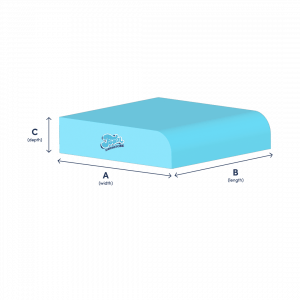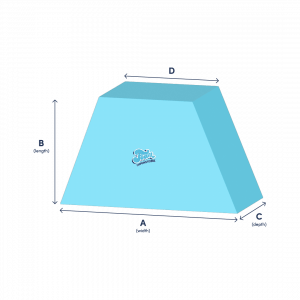High-density foam is a popular material known for its durability and support. It is commonly used in upholstery, bedding, and insulation projects. Cutting high-density foam might seem like a challenging task, but with the right tools and techniques, you can achieve precise and clean cuts. In this article, we’ll explore different methods to help you cut high-density foam like a pro.
Understanding High-Density Foam
High-density foam is characterized by its compact cell structure, making it more rigid and supportive compared to regular foam. This property makes it ideal for applications where comfort and durability are essential. However, this density can also make it challenging to cut without the proper tools.
Tools and Materials Needed
Before you start cutting high-density foam, gather the necessary tools and materials. You’ll need:
- High-density foam
- Measuring tape
- Marker
- Straightedge or T-square
- Utility knife
- Electric knife
- Hot wire foam cutter
- Sandpaper
- Safety goggles and gloves
Safety Precautions
Always prioritize safety when working with cutting tools. Wear safety goggles and gloves to protect your eyes and hands. Keep your work area well-ventilated, as cutting foam can produce dust and fumes. Additionally, work on a stable surface to prevent accidents.
Step 1: Measuring and Marking
Measure the dimensions you need for your project and mark the foam with a marker and straightedge. Use a T-square for precise right angles. Accurate measurements are crucial for a successful cut.
Step 2: Choosing the Right Cutting Tool
The choice of cutting tool depends on your project and personal preferences. You can use a utility knife, an electric knife, or a hot wire foam cutter. Each tool has its advantages and is suitable for specific cutting tasks.
Step 3: Cutting with a Utility Knife
A utility knife is an excellent choice for straight cuts. Use a sharp blade and follow your marked lines. Apply gentle, consistent pressure to ensure a clean cut. Change the blade if it becomes dull.
Step 4: Using an Electric Knife
An electric knife is a convenient option for cutting high-density foam. It provides a smooth and precise cut. Simply follow your marked lines and let the electric knife do the work. Ensure the blade is sharp for optimal results.
Step 5: Hot Wire Foam Cutter
A hot wire foam cutter is ideal for intricate cuts, curves, and angles. It melts through the foam, leaving a clean edge. Be cautious while using this tool and follow safety guidelines to avoid accidents.
Step 6: Cutting Curves and Angles
To cut curves and angles, use a hot wire foam cutter or an electric knife. Go slowly and follow your marked lines. Practice on a scrap piece of foam to gain confidence.
Step 7: Smoothing the Edges
After cutting, you may notice rough edges. Use sandpaper to smooth them out. Gently sand the edges in a circular motion until they are even and free from imperfections.
Alternative Methods
If you don’t have access to the mentioned tools, you can also consider alternative methods for cutting high-density foam. These include using serrated knives, serrated bread knives, or even a hacksaw blade.
Sanding and Shaping
For more intricate projects that require shaping, use sandpaper to achieve the desired contours. Sand in a controlled manner, taking your time to create a smooth and polished finish.
FAQs
Can I use a regular knife to cut high-density foam?
Yes, you can use a regular knife, but it’s recommended to use a utility knife or an electric knife for cleaner cuts.
How do I prevent the foam from crumbling during cutting?
To prevent crumbling, ensure your cutting tools are sharp and make gentle, consistent cuts.
What is the best tool for cutting curves in high-density foam?
A hot wire foam cutter or an electric knife is ideal for cutting curves.
Do I need safety gear when cutting high-density foam?
Yes, always wear safety goggles and gloves to protect your eyes and hands.
Can I use high-density foam for outdoor projects?
High-density foam is not recommended for outdoor use, as it is not weather-resistant.
This comprehensive guide provides all the information you need to cut high-density foam effectively and safely. By following the steps and recommendations outlined here, you’ll be well-equipped to tackle your next DIY project with confidence and precision. Whether you’re crafting custom cushions, insulating your home, or working on other creative ventures, knowing how to cut high-density foam at home is a valuable skill that will yield professional results. So, get ready to embark on your next project and bring your ideas to life with precision-cut high-density foam.
For those eager to dive into their projects right away, don’t forget to gather your tools and materials, prioritize safety, and follow the step-by-step instructions provided. Happy crafting!
Conclusion
Cutting high-density foam at home can be a straightforward process when you have the right tools and follow the correct techniques. Whether you’re working on a DIY cushion, upholstery, or insulation project, precise cuts are essential for a professional result.
High-density foam is a versatile material that, with the appropriate tools and safety precautions, can be easily cut at home. Remember to measure and mark accurately, choose the right cutting tool, and prioritize safety. With these steps, you can create high-quality projects that meet your specific needs.




